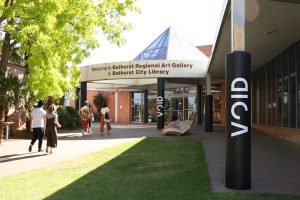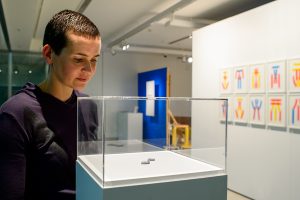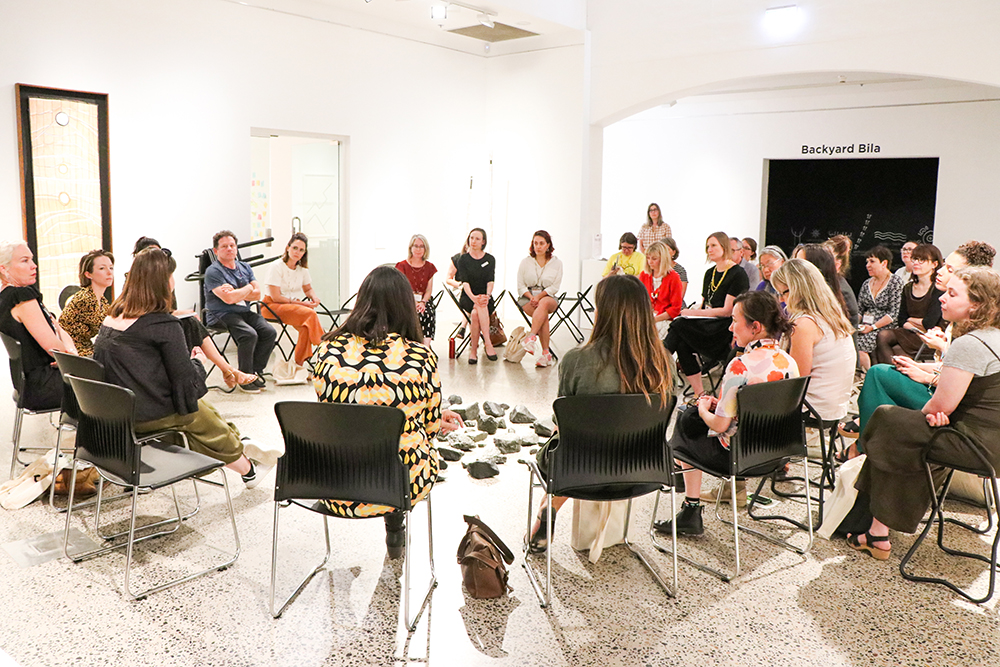
Void Education Symposium, Bathurst Regional Art Gallery
Void, curated by Emily McDaniel, installation view, Bathurst Regional Art Gallery, 2019. Photo: Vanessa Low
“Silences add meaning and emphasis”
- Emily McDaniel 2019
For some, the idea of the void denotes emptiness or a lack, and for others it may signify loss or invalidity. As Steve Miller, the Aboriginal Programs Manager at M&G NSW noted upon opening the exhibition Void at Bathurst Regional Art Gallery, this word may also evoke supernatural connotations. Emily McDaniel does not seek to simply reverse such preconceived notions of the void with her considered curation, but instead asks audiences to identify potentiality within the empty, recognise the endurance caused by loss, find intention in a lack, acknowledge invalidity as a position, and perhaps see that the void can transport accepted ideas and knowledge beyond expectations.
In conjunction with UTS Gallery and Bathurst Regional Art Gallery, M&G NSW is currently touring Void to eight locations across the country that will engage with the philosophy of the void explored by McDaniel and the artists in this show by creating spaces for conversation and opportunities for education.
“[the void] isn’t empty space, it’s filled with significance, we just need to change the way we think”
- Emily McDaniel 2019
The complex and meaningful themes within Void, and a vocabulary to support them, was established at the Void Education Symposium hosted by Bathurst Regional Art Gallery on 5 December 2019. Through the Symposium, it became evident that it is important for each location to transform and extend Void in consultation with the Elders and Traditional Owners of their unique community, and with consideration to localised conversations and knowledge. Volunteer, education and front-of-house staff are often the first people within galleries and museums to be confronted with difficult questions from audiences, and are also the people charged with the role of creating safe spaces for discussion, curiosity, complexity, and exploration tailored to the needs of their community. To support this role beyond the Symposium, M&G NSW is employing aspects of ‘cultural mediation’.
M&G NSW is currently investigating the practice of cultural mediation throughout the touring exhibitions program. This engagement tool is used to foster opportunities for peer-to-peer connections through the sharing of opinions, knowledge and tangential information, so that the possibility to find a moment or thread of interest within an exhibition can be created via non-didactic interactions. To aid with this, Annie-renae Winters, in conjunction with M&G NSW, has devised the Void Training Pack to reveal the ideas, lessons and information shared at the Symposium, as well as consider learning and thinking beyond the exhibition that may provide fodder for dialogue. Examples include the film Mimi by Warwick Thornton that adds a cheeky yet skittish personality to both Jennifer and Josephine Wurrkidj’s Mimih Spirit artworks; academic texts that explore Indigenous Astronomy as visualised in the works of Mabel Juli and Freddie Timms; and Bruce Pascoe’s book Dark Emu that re-examines colonial accounts of Aboriginal agriculture, aquaculture and engineering.
To view the Void Training Pack, please see the PDF below.
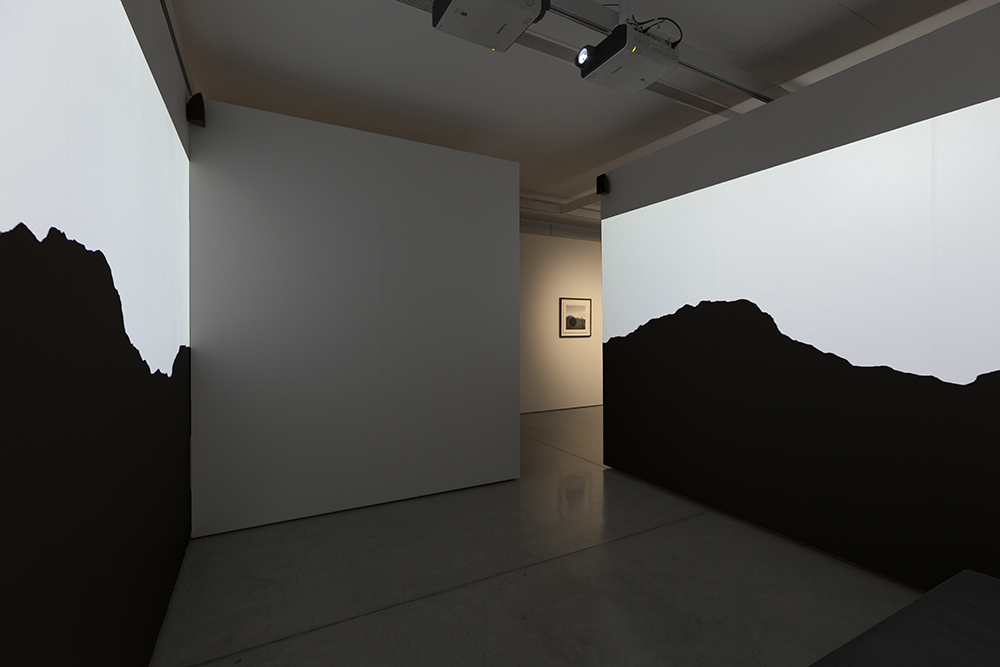
Void, curated by Emily McDaniel, (installation view) UTS Gallery, 25 September—16 November 2018.
Pictured: Jonathan Jones, dhawin-dyuray (axe-having) [detail], 2015; James Tylor, (Deleted Scenes) From an Untouched Landscape #12 Franklin-Gordon Wild River National Park, Tasmania, Palawa Land, 2013. Photo: Jessica Maurer Photography
Audiences at Bathurst Regional Art Gallery commented that Void was inspiring, pensive and timely, and commended staff for their elucidation of its themes through conversation, public programming and their simultaneous presentations:
“Very interesting exhibition and amazing explanation from the guide”
“Wonderful, thought-provoking exhibition”
“The learning begins!”
“Amazing – very powerful. Always has been – always will be”
“Enlightening and timely”
“Beautiful work combined with a wise and powerful message”
On 21 February 2020, Void was officially opened by Gordon Ramsay MLA Minister for the Arts and Dr Danièle Hromek at Canberra Museum and Gallery. Along with the Training Pack for gallery staff, a Learning Resource aimed towards school students, and free catalogue featuring an essay by Hromek and foreword by Bruce Pascoe, Canberra Museum and Gallery have created opportunities for further learning for their staff and community inspired by aspects of the Void Education Symposium.
On 16 April they will be hosting Enter the Void: Yarning Circle with Curator Emily McDaniel, allowing for a reflective way of processing the complexities within Void. They will also be facilitating an Indigenous Walking Tour of Black Mountain Reserve on 18 April that will take place entirely outside of the gallery space, led by Ngunawal man Tyrone Bell. Paired with their reading room containing books related to the exhibition (which was also a localised component of this show in Bathurst), such programming allows Void to become a point of departure to explore local understandings and endurance, as well as observe the vacuity and potentiality of the voids present in knowledge and history nationally.
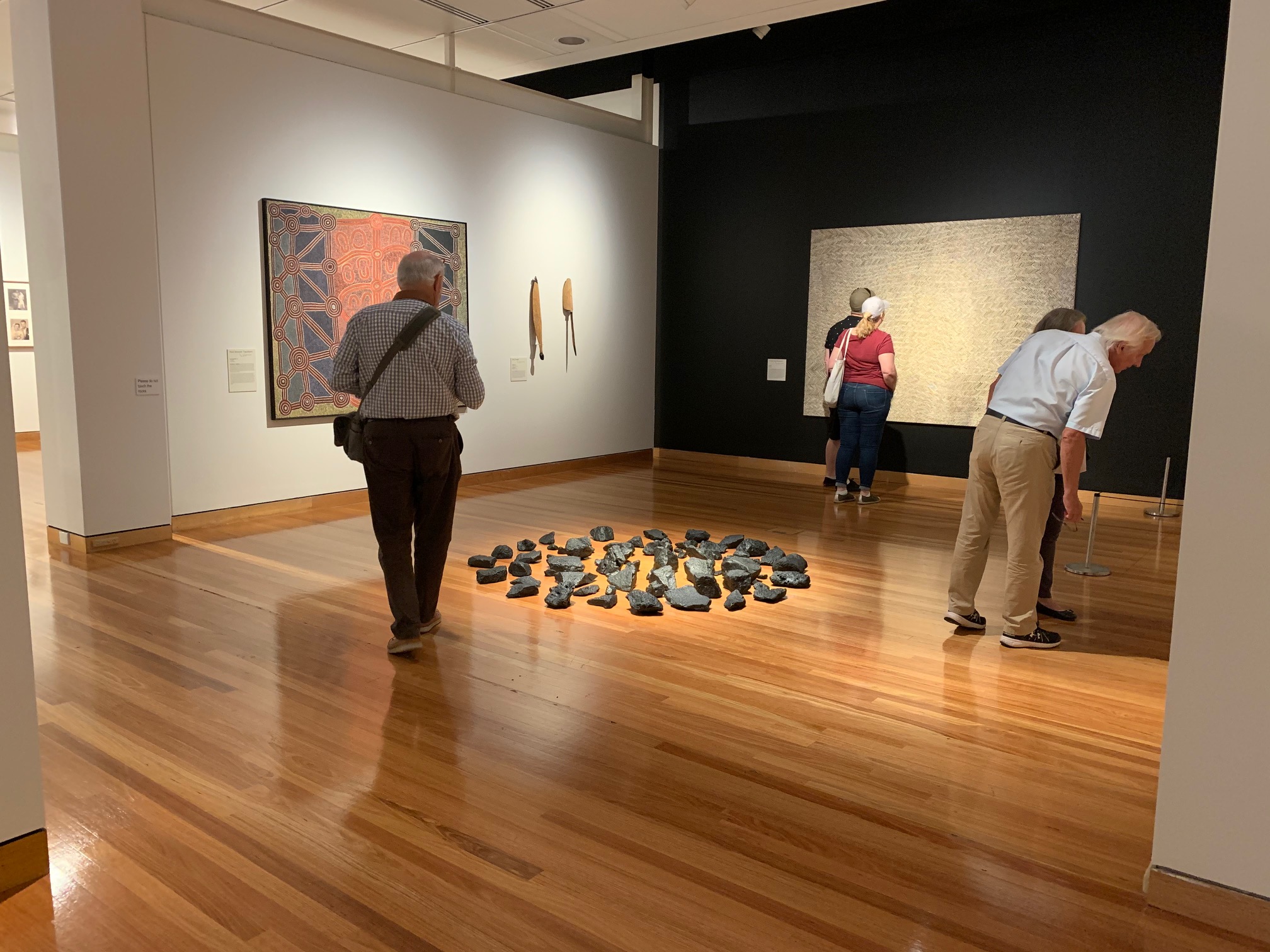
Void, curated by Emiioly McDaniel
Installation view, Canberra Museum and Gallery, 2020
An exhibition curated by Emily McDaniel, in conjunction with UTS Gallery and Bathurst Regional Art Gallery, presented nationally by Museums & Galleries of NSW. This project has been assisted by the Australian Government’s Visions of Australia program.





